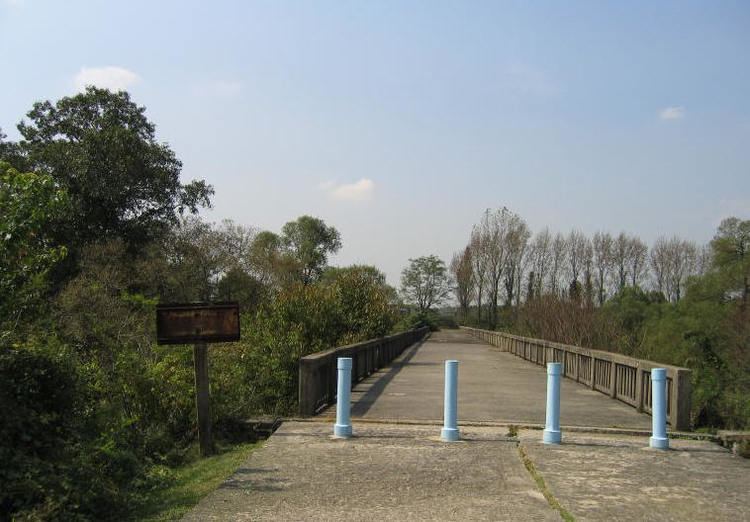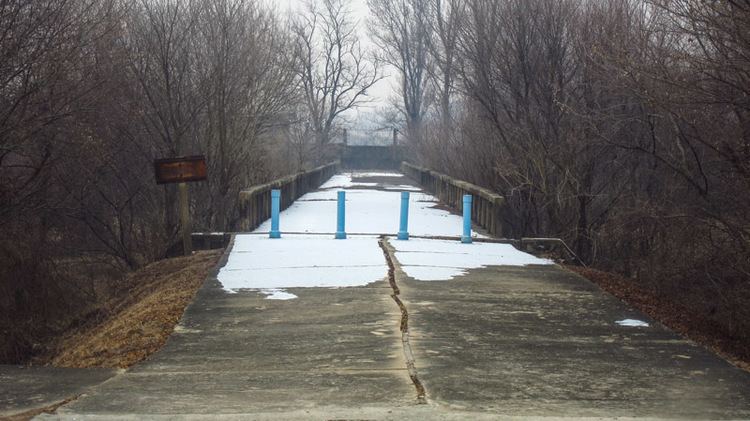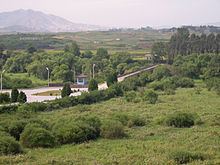Hangul 돌아올 수 없는 다리 McCune–Reischauer Toraol su ŏmnŭn tari Body of water Sachong | Revised Romanization Doraol su eomneun dari Bridge type Footbridge | |
 | ||
Similar Dora Observatory, Dorasan Station, Imjingak, Third Tunnel of Aggression, USS Pueblo (AGER‑2) | ||
Korean dmz bridge of no return 1953 to 2015
Located in the Joint Security Area (JSA), the so-called "Bridge of No Return" crosses the Military Demarcation Line (MDL) between North Korea and South Korea. It was used for prisoner exchanges at the end of the Korean War in 1953. The name originates from the final ultimatum that was given to prisoners of war brought to the bridge for repatriation: they could either remain in the country of their captivity or cross the bridge to return to their homeland. However, once they chose to cross the bridge, they would never be allowed to return, even if they later changed their minds.
Contents
- Korean dmz bridge of no return 1953 to 2015
- Dmz bridge of no return
- Major events
- Ceremonies on the bridge
- In popular culture
- References

The last time the bridge was used for prisoner exchanges was in 1968, when the crew of USS Pueblo was released and ordered to cross into South Korea via the bridge. The bridge was actively used by the North Koreans up until the Axe Murder Incident in August 1976, at which time the United Nations Command demanded that the Military Demarcation Line within the Joint Security Area be enforced and clearly marked. Within 72 hours, the North Koreans had built a new bridge (dubbed "The 72-Hour Bridge") on the northern half of the JSA and the original Bridge of No Return was no longer used.
The Military Demarcation Line runs through the middle of the bridge. At the end of either side of the bridge are guard houses of the respective countries. The North Korean building is called KPA#4 while the United Nations Command (UNC) checkpoint was called CP#3 (it was abandoned in the mid-1980s). CP#3, which is surrounded by trees, was only visible from one other UNC site during the winter months, OP#5 (now renamed to CP#3). The North's Korean People's Army (KPA) had made numerous attempts to grab UNC personnel from the old CP#3 and drag them across the bridge into North Korean territory.

Because of this proximity to North Korean territory, being surrounded on all access routes by North Korean checkpoints, and repeated attempts to kidnap the UNC personnel working there, CP#3 was often referred to as "The Loneliest Outpost in the World". As of 2003, the bridge is considered in need of repair. According to a report on CNN, the US government has offered to fix the bridge or even replace it, but North Korea has denied permission.

Dmz bridge of no return
Major events
This operation was a test case for prisoner repatriation, one of the four main issues of contention during two years of negotiation. 605 sick, wounded, and/or injured UNC prisoners were exchanged for 6,030 sick or injured Communist prisoners.

Ceremonies on the bridge
U.S. Army soldiers who are stationed at Camp Bonifas or Camp Liberty Bell in the Joint Security Area are offered the opportunity to have their promotion or reenlistment ceremonies held in the centre of the Bridge of No Return. The bridge is split in half by the Military Demarcation Line which marks where North Korean territory ends and South Korean territory begins. During a U.S. or ROK (Republic of Korea) ceremony, two guards are posted at the Demarcation Line facing west (toward North Korea).
In popular culture
The bridge is also portrayed in the beginning of the James Bond film, Die Another Day, where the characters Bond and Zao are swapped (though with rows of concertina wire, bunkers, machine guns, or spotlights not present at the real bridge). It was portrayed in the South Korean movie Joint Security Area, where the shooting of two North Korean guards becomes the focus of an investigation and of the movie, and the American movie Salt, when agent Evelyn Salt (Angelina Jolie) is traded for a captured North Korean official after being held captive in North Korea.
